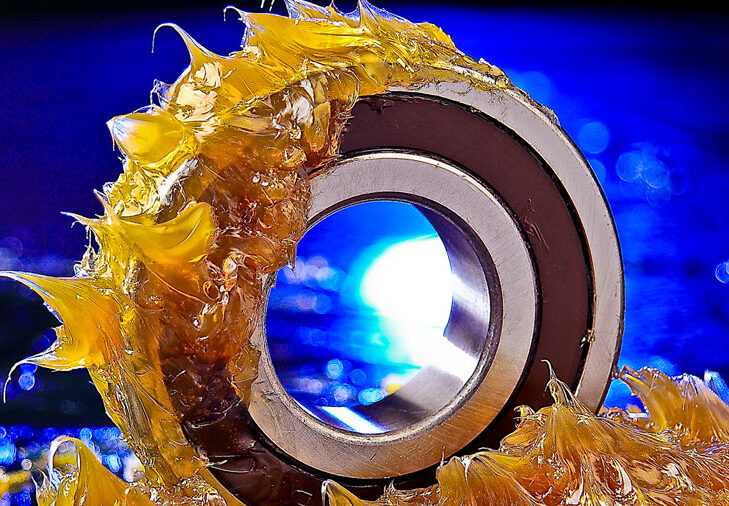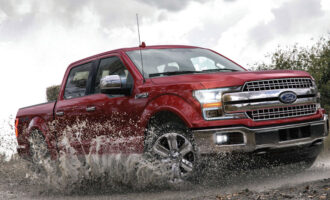
University of Texas awarded patent for universal aircraft grease
A multi-purpose grease combines the properties of two or more specialised greases for use in a single application. However, successfully formulating a single grease that handles a variety of diversified applications is no mean feat. No surprises then, that there is a superfluity of individual lubricating greases on the market. This vast array can be confusing to customers and increases the likelihood of misappropriation.
The Tribology, Lubrication and Coating Laboratory at the University of Texas in Arlington (UTA) in the United States believe they have solved the age-old problem of which types of greases to employ in aviation.
About five years ago, the university was approached by Boeing to work on the development of a universal grease for aircraft applications. Boeing provided funding for the first three years of the project. The patent was originally filed on 8 September 2016, and subsequently issued on 4 September 2018.

“We have developed a new class of lubricants with enhanced wear and friction performance by using milled metal sulfite particles as an additive to grease, which shows better performance over a range of loads,” said Pranesh Aswath, professor of materials science and engineering and mechanical and aerospace engineering at the university.
This is an exciting development for an aviation lubricant market that is changing amid growing demand, and the shifting requirements of next-generation aviation lubricants. Aswath said Boeing is looking at scale up issues, so commercialisation of this product is not in the near-term horizon yet.
In 2016, the aviation lubricant market was valued at USD1.93 billion by Future Market Insights. In a report entitled Aviation Lubricants Market: Global Industry Analysis 2013-2017 and Opportunity Assessment; 2018-2028, they project the market to grow to USD2.68 billion by 2022, at a compound annual growth rate (CAGR) of 5.65%. North America, Europe and the Middle East/Asia are the key demand drivers. Heightening demand in the aviation industry is impelling research, development and innovation.

UTA’s Tribology, Lubrication and Coating Laboratory was established in 1999 and has developed a strong reputation in the field of lubricant additives research, with 10 patents and scores of journal articles to its credit since inception. The wider UTA was granted 23 patents in 2017 alone, the National Academy of Inventors and the Intellectual Property Owners Association ranking the university number three in the Top 100 Worldwide Universities Granted U.S. Utility Patents.
Aswath, the lead inventor for the aviation project, highlighted more effective performance and enhanced aircraft safety as key contributions of the new aviation grease. “A single universal grease that is able to function in multiple conditions is key for the aerospace industry, as using two or three greases has proven to be incompatible and even caused crashes in the 1980s,” he says. Aswath believes their grease can satisfy an “important gap” in the market.
Combining or mixing greases that are incompatible can cause them to interact adversely and produce declines in performance such as consistency changes in individual greases, excessive oil separation, or bleeding. As the rate of shearing and aircraft temperature increases, these performance declines become even more pronounced.

Despite similarities between greases utilised in aviation and other industrial formulations, it is the quality assurance and product integrity requirements of aviation lubricants that sets them apart. Aviation greases undergo more extensive testing than other types of lubricating greases. When flying up to 60,000 feet in the sky, failure of individual componentry is not an option, despite exposure to extreme temperatures, frictional forces and high load bearing during operation. “Universal greases used on aircraft have to function under extreme pressure conditions and variable temperatures, as well as work on all the moving parts of an aircraft, from wings to a door handle,” said Aswath.
The researchers at UTA achieved the difficult task of formulating a universal aviation grease by adapting metal sulfite, or molybdenum disulfide (MoS2), a commonly used additive in solid lubricants due to its low friction properties and robustness. Until now, the downside of MoS2 has been excessive wear and higher friction at low loads or resistances. The research team has significantly improved wear properties over a range of mechanical resistances by using pre-milled mixtures of MoS2-based grease and sulfurized additives. Milled metal sulfite particles have rounded or reduced surface energy compared to non-milled particles, they say.
Not only does this provide the opportunity to simplify aircraft maintenance but this development also provides positive impacts on stock inventory and cost savings.







